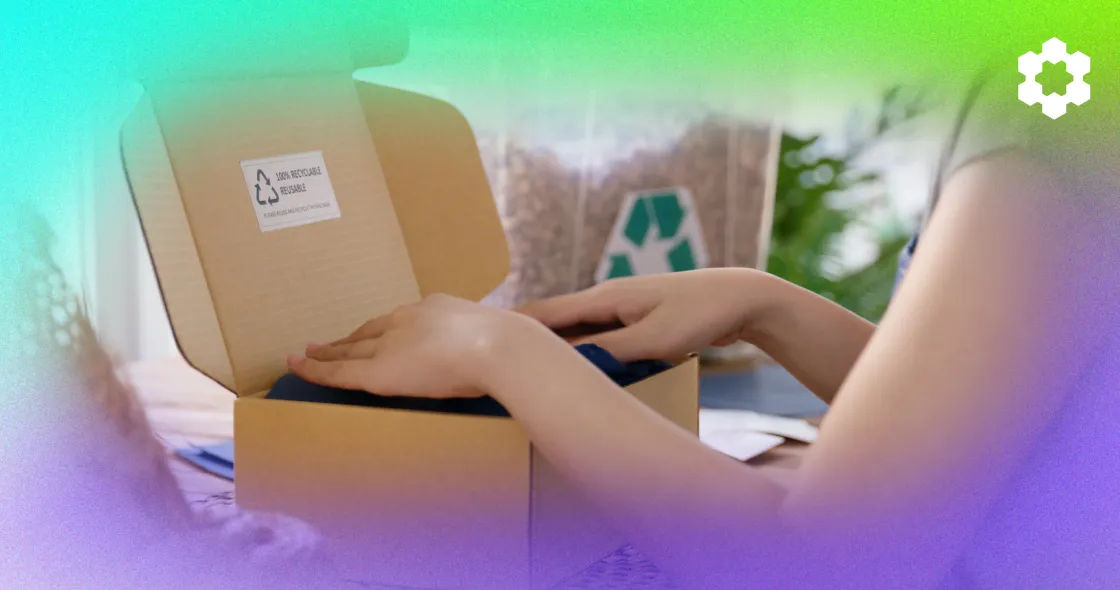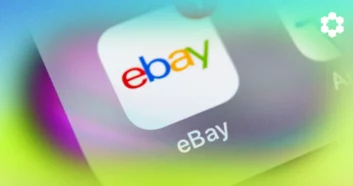As consumers become more environmentally conscious, companies must innovate to meet the demand for sustainable practices. One such initiative is Amazon’s Ships in Product Packaging (SIPP) program (formerly SIOC), a cornerstone of Amazon’s sustainability efforts, which aims to reduce excess packaging and improve the overall customer experience.
Recently, Vanessa Hung sat down with Mitch Clayton, a 17-year Amazon veteran and key member of the SIPP team, to discuss the program’s impact and the opportunities it presents for sellers.
What is the Amazon SIPP Program?
The Amazon Ships in Product Packaging (SIPP) program (previously Ships in Own Container – SIOC) is designed to minimize the environmental footprint of ecommerce by shipping products in their original packaging, without the need for additional Amazon boxes or protective materials.
Since its inception, the program has dramatically reduced packaging waste, cutting down on the use of cardboard, plastic, and other materials. Since 2015, the program has eliminated 2 million tons of packaging material.
Since 2020, 37,150 metric tons of plastic have been avoided globally thanks to Amazon’s sustainable packaging initiatives.
But the Amazon SIPP program is more than just an environmental win; it’s also a smart business move for sellers. By enrolling in the program, sellers can benefit from lower fulfillment fees, enhanced brand visibility, and a better customer experience.
The Journey to Amazon SIPP: An Evolution in Packaging
The idea for SIPP was born out of a simple yet profound question: “How can we ship items safely and efficiently while reducing the amount of packaging?”
Traditionally, products sold on Amazon have made multiple stops before reaching the customer, picking up additional packaging at each stage. This process, while ensuring the safety of the product, has often resulted in excessive use of materials.
Amazon’s solution was to design a system where certain products could be shipped in their original packaging, eliminating the need for extra boxes, bubbles, and tape. This began in 2008 with Amazon’s Frustration-Free Packaging (FFS) program, which included SIOC (now Amazon SIPP).
The program started with products that were naturally suited to this approach—items like diapers, children’s toys, and luggage, which already had robust packaging. To scale this effort, Amazon developed an AI model that identifies products suitable for SIPP and determines the most efficient packaging methods. This AI-driven approach has been crucial in reducing packaging waste while ensuring that products arrive at customers’ doors in perfect condition.
Benefits for Sellers: Cost Savings and Brand Enhancement
The advantages of the Amazon SIPP program are many, ranging from environmental to financial:
1. Sustainability: Joining the SIPP program allows sellers to align with the growing consumer demand for sustainable practices.
With 80% of consumers indicating that they care about the environmental impact of their purchases, participating in SIPP can be a significant differentiator in the market.
2. Cost Savings: Amazon incentivizes sellers by offering lower fulfillment fees for products that are certified to ship in their own packaging. Depending on the item’s size, weight, and the marketplace it ships into, sellers can save anywhere from a few cents to several dollars per unit.
3. Brand Visibility: Eliminating the Amazon overbox gives sellers the opportunity to showcase their branding directly on the packaging. This can enhance the customer’s unboxing experience, making it more memorable and reinforcing brand loyalty.
4. Reduced Damage Rates: Products certified under the SIPP program undergo rigorous testing to ensure that their packaging can withstand the rigors of shipping. This is designed to ensure fewer damages during transit, reducing the costs associated with returns and refunds.
Customer Experience: A Win-Win
Beyond the operational and financial benefits, the Amazon SIPP program significantly enhances the customer experience. The reduction in packaging layers simplifies the unboxing process, making it more enjoyable and less cumbersome for customers.
For sellers, shipping products in their original packaging allows them to incorporate their brand messaging, create bundles, and even offer unique packaging solutions like reversible boxes that engage the customer.
However, the program also acknowledges the need for discretion. Some customers prefer their items to be concealed, whether for privacy reasons or to prevent package theft. For those customers (and sellers), Amazon provides options for customers to opt out of SIPP and receive their orders in traditional Amazon packaging, ensuring that the program remains flexible and customer-centric.
Enrolling in the SIPP Program: A Step-by-Step Guide
Enrolling for SIPP is a four-step process:
- Review and Design: Sellers should assess their current packaging to determine if it meets the program’s requirements. Some products may already be compliant, while others might need minor adjustments.
- Group Similar ASINs: Sellers can group similar products to streamline the certification process. This step is particularly useful for items with similar size, weight, and packaging materials.
- Test and Evaluate: To qualify for SIPP, all packaging must pass a physical performance test, either through a self-drop test or by using an International Safe Transit Association (ISTA) lab.
- Enroll: Finally, sellers can log into Seller Central and enroll eligible ASINs. Once certified, these products can start shipping through the SIPP program, allowing sellers to immediately benefit from lower fees and improved sustainability.
The Future of Ecommerce Packaging
The Amazon SIPP program is a game-changer for sellers looking to align with sustainability trends while optimizing their operations. The benefits are clear: lower costs, improved customer experience, and a significant positive impact on the environment. For those not yet enrolled, now is the time to consider making the switch and joining the future of sustainable e-commerce.




